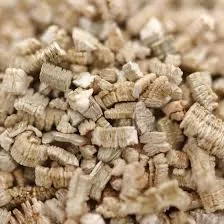Авг . 14, 2024 10:26 Back to list
Exploring the Manufacturing Process and Benefits of Fire-Resistant Board Production Industries
Understanding Fireproof Boards and Their Manufacturing
In recent years, the demand for fireproof boards has surged due to the increasing importance of safety in architectural design and construction. Fireproof boards, also known as fire-resistant panels, are materials designed to withstand high temperatures and prevent the spread of fire. These boards are essential in various applications, including buildings, industrial facilities, and transportation. This article explores the significance of fireproof boards, the manufacturing process, and their applications.
The Importance of Fireproof Boards
Fireproof boards play a critical role in enhancing safety and compliance with fire regulations. They are specifically engineered to resist fire and minimize structural damage in case of a fire outbreak. By incorporating fire-resistant materials into building designs, architects and engineers can protect lives and property from the devastating effects of fire.
Moreover, fireproof boards can improve a building’s overall energy efficiency. They often have insulation properties, which help regulate indoor temperatures, reducing energy consumption for heating and cooling. As energy efficiency becomes increasingly crucial in modern construction, the demand for such innovative materials will continue to grow.
Types of Fireproof Boards
There are several types of fireproof boards produced by various factories, each designed for specific applications. Some of the most common materials include
1. Gypsum Board Gypsum boards are widely used due to their excellent fire-resistant properties. They are composed of a gypsum core sandwiched between two sheets of heavy paper, providing an effective barrier against fire.
2. Cement Board Made from a mixture of cement and reinforcing fibers, cement boards offer high durability and fire resistance. They are commonly used in external wall cladding and as a substrate for tiles in high-moisture areas.
3. Mineral Fiber Board These boards are made from mineral fibers and are excellent for use in commercial buildings. They can withstand high temperatures and are often used in ceilings, walls, and partitions.
4. Calcium Silicate Board Known for their exceptional thermal insulation properties, calcium silicate boards are used in various industrial applications, including power plants and refineries. They are resistant to moisture and do not emit harmful substances when exposed to fire.
fireproof boards factories

Manufacturing Process
The manufacturing of fireproof boards involves several critical steps to ensure quality and effectiveness. Here is a general overview of the process
1. Material Selection The first step is selecting the appropriate raw materials, such as gypsum, cement, mineral fibers, and additives that enhance fire resistance.
2. Mixing The selected materials are mixed according to specific formulations. The ratio of materials is crucial as it determines the board’s final properties, including density and fire resistance.
3. Molding The mixture is poured into molds, where it is shaped into panels or sheets. This is a critical stage where the dimensions and shapes are defined.
4. Curing and Drying The molded boards undergo a curing process to harden. They are then dried in controlled environments to remove moisture content, which is essential for fire resistance.
5. Quality Control Finished products go through rigorous testing to ensure they meet safety standards and regulations. This may include assessments for thermal resistance, mechanical strength, and durability.
6. Packaging and Distribution Once the boards pass quality control, they are packaged for delivery to construction sites, distributors, or retailers.
Conclusion
Fireproof boards are indispensable in contemporary construction, providing safety, energy efficiency, and compliance with building codes. With advancements in manufacturing processes and materials, factories producing these boards are continually improving their offerings to meet the growing demands of the market. As we move forward, the significance of fireproof materials in ensuring safety in various environments will undoubtedly become even more pronounced.
-
High-Quality Fe-C Alloy Leading Manufacturers & Spherical Alloy Materials Supplier
NewsJun.10,2025
-
Premium Low Nitrogen Recarburiser Supplier & Manufacturer – High Quality Exporters
NewsJun.10,2025
-
DT4 High-Quality Magnetic Materials Leading DT4 Manufacturer & Supplier
NewsJun.10,2025
-
High-Performance Spring Steel Suppliers Custom Solutions
NewsJun.10,2025
-
Premium SWRCH6A Manufacturer Steel Wire Supplier & Factory
NewsJun.10,2025
-
Premium Mild Steel Wire Rod Supplier & Manufacturer
NewsJun.10,2025
